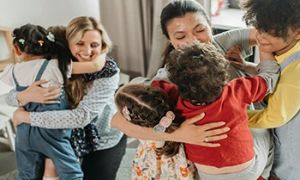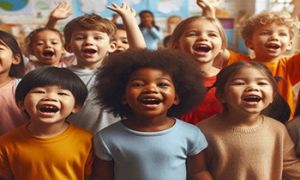

In the NSW and VIC early childhood sector, safeguarding children and ensuring accountability in service operations are paramount. But what happens when a complaint—particularly one involving alleged harm to a child—is investigated by the Department of Education and deemed “inconclusive,” with no breach of law or regulation found? Can that decision be contested, and if so, how?
This article outlines the formal pathways available to services and individuals in NSW and VIC who seek to challenge departmental decisions, especially in cases where child safety concerns remain unresolved.
“I was watching the rain because it made me feel calm. I didn’t want to talk; I just wanted to listen to the drops.” This simple statement carries more than imagination—it holds intention, emotion, and agency.
This article is a call to shift the lens. To move from about to by. From adult narration to child-led storytelling. Because when children speak, they don’t just describe—they reveal.
In early childhood services across Australia, educators are often expected to stay beyond their rostered hours to complete tasks—cleaning, documentation, ratio coverage, or closing duties. But when this extra time goes unpaid, it’s not just unfair—it may be unlawful.
In early childhood education, two terms often surface in compliance conversations: active supervision and in ratio. While both are essential to child safety and regulatory integrity, they serve distinct purposes—and conflating them can lead to serious oversights in practice. Let’s unpack each concept, then explore how they play out in real-world settings.
A: Legally, yes—an educator is considered “in ratio” as long as they are physically present and supervising the required number of children according to the age-based ratios set by the National Quality Framework (NQF). But practically? That’s where the system starts to unravel.
With new child safety regulations having just come into effect, here’s a sector-responsive list of Quality Improvement Plan (QIP) priorities that services across Australia should consider updating immediately. These priorities align with the National Quality Standard (NQS), recent regulatory changes, and sector best practice.
In early childhood settings, food safety isn’t just a regulatory checkbox—it’s a daily responsibility tied to children’s wellbeing. Whether you're preparing snacks, managing mealtimes, or supporting nutrition education, having a valid food handling certificate is essential. This guide consolidates the most widely recommended options from sector peers across Australia, saving you time and stress.
In early childhood education across Australia, the question of whether educators can refuse to work alone is no longer hypothetical—it’s urgent. With rising behavioural complexities, mounting workloads, and increasing safety concerns, educators are asking, "Do I have the right to say no?" The answer is layered, but powerful: Yes, you do have a leg to stand on. And it’s time we stood together.
Father’s Day offers a chance to celebrate love, care, and connection—but for children without fathers, it can also be a sensitive time. In early childhood settings, educators have a responsibility to ensure that celebrations are inclusive, emotionally safe, and reflective of diverse family structures.
Across the early childhood education and care sector, educators are sounding the alarm: current staffing ratios are insufficient to deliver safe, meaningful, and developmentally appropriate care. While recent reforms have focused on mobile phone bans and child safety protocols, many in the sector argue that these measures overlook a deeper structural issue—chronic understaffing driven by profit-based ratio models.
 Here is the list of the EYLF Learning Outcomes that you can use as a guide or reference for your documentation and planning. The EYLF… Read More
Here is the list of the EYLF Learning Outcomes that you can use as a guide or reference for your documentation and planning. The EYLF… Read More
 The EYLF is a guide which consists of Principles, Practices and 5 main Learning Outcomes along with each of their sub outcomes, based on identity,… Read More
The EYLF is a guide which consists of Principles, Practices and 5 main Learning Outcomes along with each of their sub outcomes, based on identity,… Read More
 This is a guide on How to Write a Learning Story. It provides information on What Is A Learning Story, Writing A Learning Story, Sample… Read More
This is a guide on How to Write a Learning Story. It provides information on What Is A Learning Story, Writing A Learning Story, Sample… Read More
 One of the most important types of documentation methods that educators needs to be familiar with are “observations”. Observations are crucial for all early childhood… Read More
One of the most important types of documentation methods that educators needs to be familiar with are “observations”. Observations are crucial for all early childhood… Read More
 To support children achieve learning outcomes from the EYLF Framework, the following list gives educators examples of how to promote children's learning in each individual… Read More
To support children achieve learning outcomes from the EYLF Framework, the following list gives educators examples of how to promote children's learning in each individual… Read More
 Reflective practice is learning from everyday situations and issues and concerns that arise which form part of our daily routine while working in an early… Read More
Reflective practice is learning from everyday situations and issues and concerns that arise which form part of our daily routine while working in an early… Read More
 Within Australia, Programming and Planning is reflected and supported by the Early Years Learning Framework. Educators within early childhood settings, use the EYLF to guide… Read More
Within Australia, Programming and Planning is reflected and supported by the Early Years Learning Framework. Educators within early childhood settings, use the EYLF to guide… Read More
 When observing children, it's important that we use a range of different observation methods from running records, learning stories to photographs and work samples. Using… Read More
When observing children, it's important that we use a range of different observation methods from running records, learning stories to photographs and work samples. Using… Read More
 This is a guide for educators on what to observe under each sub learning outcome from the EYLF Framework, when a child is engaged in… Read More
This is a guide for educators on what to observe under each sub learning outcome from the EYLF Framework, when a child is engaged in… Read More
 The Early Years Learning Framework describes the curriculum as “all the interactions, experiences, activities, routines and events, planned and unplanned, that occur in an environment… Read More
The Early Years Learning Framework describes the curriculum as “all the interactions, experiences, activities, routines and events, planned and unplanned, that occur in an environment… Read More

Outcome 2 of the EYLF—Children are connected with and contribute to their world—reminds us that...
See more...
Engaging families in early learning is crucial for fostering a collaborative environment that supports children's...
See more...
Incorporating cultural texts into nursery rhymes is a fantastic way to celebrate diversity and introduce...
See more...© 2009-2025 Aussie Childcare Network Pty Ltd. All Rights Reserved.

